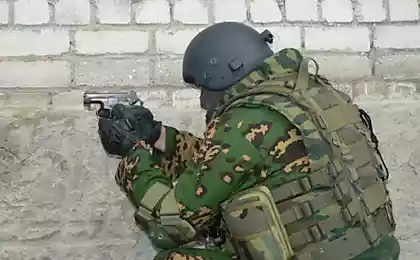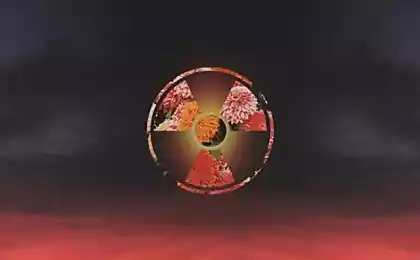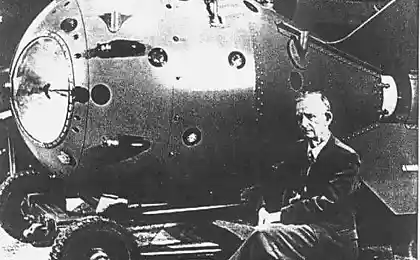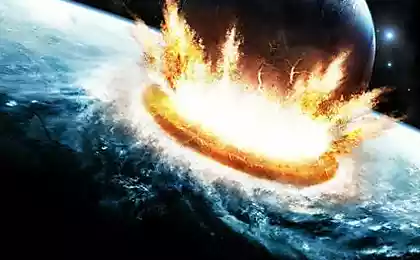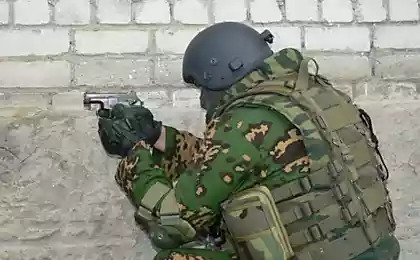749
70 years since the beginning of the nuclear age

The history of humanity is inextricably linked with the development of technology. This is a unique perk of our species in the game called "evolution". From time to time we create the next technology to radically change the military balance, or substantially facilitates the production of a resource, or giving some new features. Perhaps nuclear energy include all three of these characteristics. And the opening and curbing that power marked a new stage in the history of civilization.
July 16, 1945 in the desert expanses of the landfill in Alamogordo vspuh blindingly bright shining ball. The top-secret project "Manhattan" has been successfully completed - humanity unleashed a new force, nothing even close to comparable with which we have not yet been.
It looked something like this:
We still have a lot to learn about what is radiation, what is its impact on living organisms and the environment. And this is done in the best traditions of human history: the tests were carried out on their own kind.
Started long-term period of nuclear testing, formally ended only in 1998. During this time the planet was blown up more than 2,000 nuclear warheads. It is believed that because of this the natural background radiation in the world has increased an average of two to three times.
In 1961, our country has been tested the most powerful in the history of thermonuclear bomb AN602, it received popularly nicknamed "King Bomba" and "gruel».
Of course, nuclear energy has given us not only a new weapon. We were able to build a powerful power plant, which allowed supply electricity to the whole region. Nuclear icebreakers made possible year-round navigation along the northern coast of the Russian giant: the world's first nuclear-powered icebreaker "Lenin" was launched in 1957.

Today, the foundation of our icebreaking fleet is ships of the "Arctic" that can break through the ice thickness of up to 2, 25 m. And the world's largest nuclear icebreaker was the ship "50 Years of Victory", which develops power to 55MVt and overcome the ice thickness of up to 2 to 8 m .
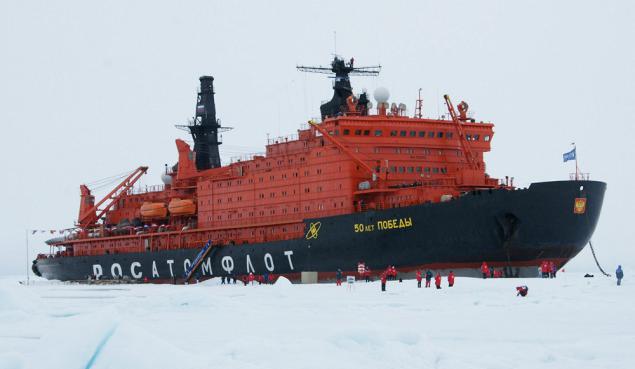
Also, a draft LC-110YA, which will have a capacity of up to 110 MW, and will break the ice thickness of 3 to 7 m. By the way, once we (and not only), even hatched the idea of creating the atomic planes. Unfortunately, the draft of such devices have not been implemented due to the huge technological difficulties. But maybe it's better when you fly over the fragile nuclear reactors in mind there are very uncomfortable thoughts and fantasies. But in the 1970s the Soviet Union was established experimental nuclear rocket engines for space vehicles. And it is possible that one day this technology will once again be in demand of our space industry.
However, the development of peaceful nuclear energy does not stop. For example, in connection with global warming and the need for the development of the Arctic and the Far East today, a draft of creating floating nuclear power plants that can supply power and heat to the coastal cities in remote regions of our country.
On the other hand, in the nuclear power market are not always the winners in terms of profitability. So it is difficult to say whether the nuclear industry expects a bright future. Although unlikely to completely abandon the humanity of this dangerous, but a powerful source of energy.
Source: geektimes.ru/company/mailru/blog/253630/



